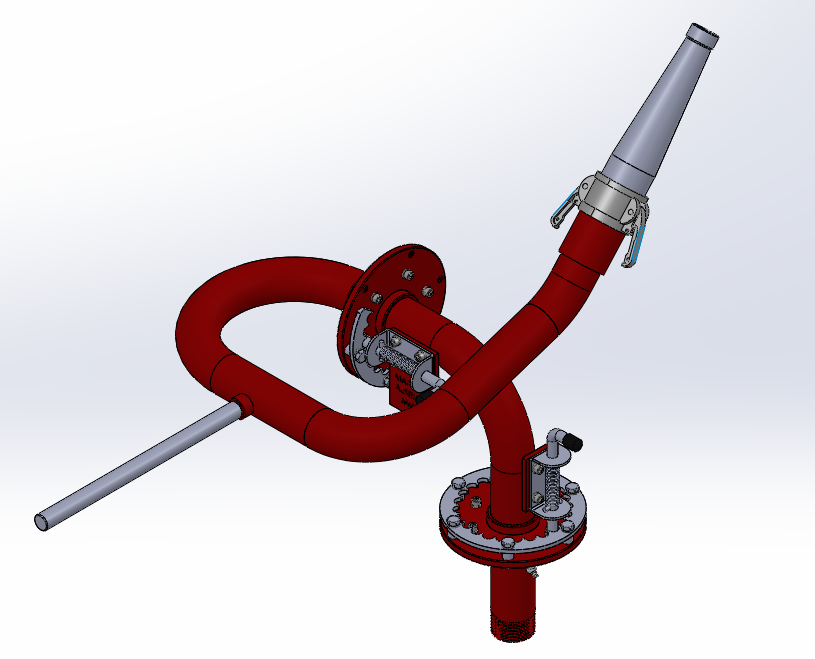

Usually, during revision surgery, it is not necessary to remove the stem, and the modular head can be removed easily by using a punch and a mallet. Another Biomet device, the M2a-38, is similar to the M2a-Magnum, but one key difference is that it does not have a separate titanium taper like the M2a-Magnum. One common MoM device is the Biomet M2a-Magnum, which is made up of several components: a cup, a femoral head, a titanium taper adapter, and a stem. Although the use of MoM THAs has gone down, many people still have them and will require revisions in the future, so it is important to understand what might happen during revision. Revisions occur because of pseudotumors (which are enlarged masses of tissue that resemble tumors), dislocations, bone fractures around the implant, and infections. The survival rate of large-diameter MoM THA implants can be as low as 51% after 6 years. MoM THAs often fail and require revision surgery. In response to their second question, the authors found that difficult revisions did result in longer operative times, more bleeding, and a higher risk of bone fracture and joint infection after surgery. In response to their first question, the authors found that, yes, Biomet M2a-Magnum implants are more difficult to revise than Biomet M2a-38 devices. First, are Biomet M2a-Magnum implants more difficult to revise than the Biomet M2a-38? Second, in cases where the M2a-Magnum was harder to revise because of problems with the modular head, were there more surgical complications (such as operative time, bleeding, a risk of fracture, or joint infection)? The authors of this study wanted to answer two questions. This study analyzes the results of 124 Metal-on-Metal THA revision surgeries, all of them involving Biomet devices. These difficulties have been reported to the FDA, but the frequency and complications of these difficulties are unknown. The authors of this study have had a lot of difficulties removing the titanium sleeve adapter in the Biomet M2a Magnum hips. This happens frequently in implant devices that have a titanium sleeve between the head and stem. However, it can actually be incredibly difficult – sometimes impossible – to remove because it can get welded to other components over time. One common component is the modular head it is supposed to be easy to remove during revision surgery. Metal-on-Metal total hip arthroplasty (MoM THA) implants are made up of a variety of components. They are intense and complex and finish with fine, velvety tannins.Title: Modular to Monoblock: Difficulties of Detaching the M2a-Magnum Head Are Common in Metal-on-metal Revisions Abstract
#MAGNUM WAGER COM FULL#
Rewarding and persistent, the best among these Bordeaux Blends are full of blueberry, blackberry, cassis, plum, tobacco and licorice. Julien wines are for those wanting subtlety, balance and consistency in their Bordeaux. The relatively homogeneous gravelly and rocky top soil on top of clay-limestone subsoil is broken only by a narrow strip of bank on either side of the “jalle,” or stream, that bisects the zone and flows into the Gironde.

Located in the north section, these are stone’s throw from Chateau Latour in Pauillac and share much in common with that well-esteemed estate. One of its best historically, the estate of Leoville, was the largest in the Médoc in the 18th century, before it was divided into the three second growths known today as Chateau Léoville-Las-Cases, Léoville-Poyferré and Léoville-Barton. Today rivalry among the classed chateaux only serves to elevate the appellation overall. While the actual class rankings set in 1855 (first, second, and so on the fifth) today do not necessarily indicate a score of quality, the classification system is important to understand in the context of Bordeaux history.

What it lacks in any first growths, it makes up in the rest: five amazing second growth chateaux, two superb third growths and four well-reputed fourth growths. Julien boasts the highest proportion of classed growths in the Médoc.


 0 kommentar(er)
0 kommentar(er)
